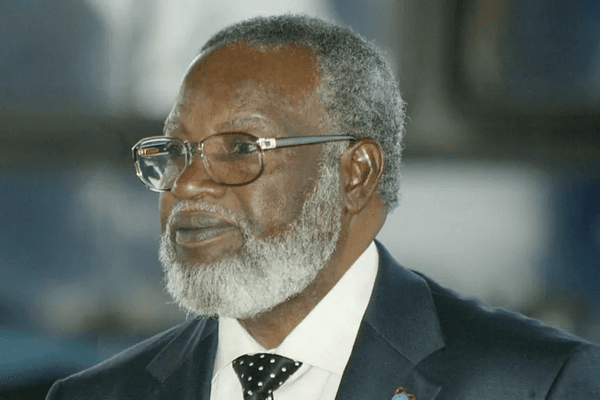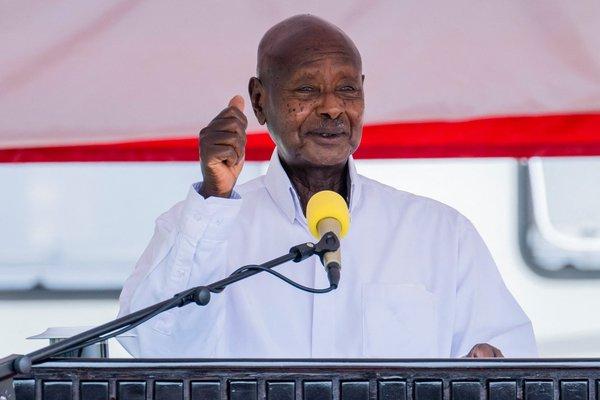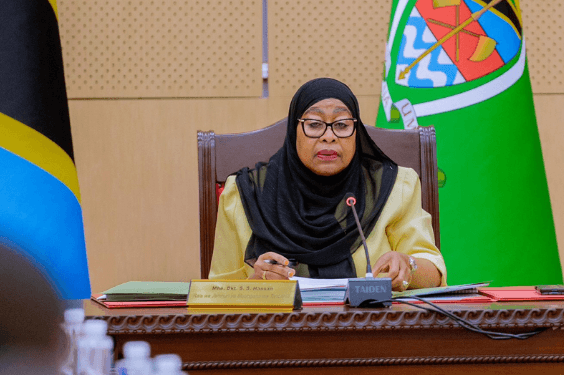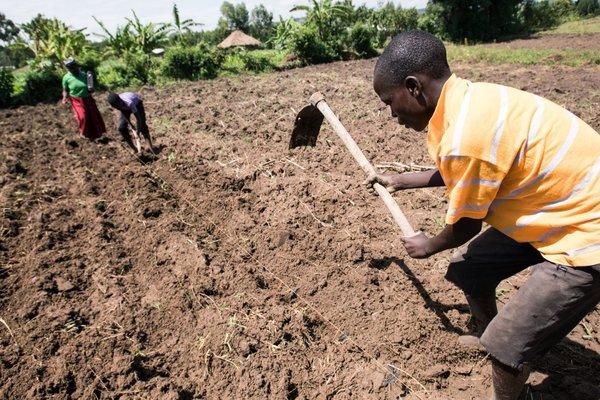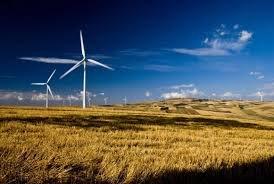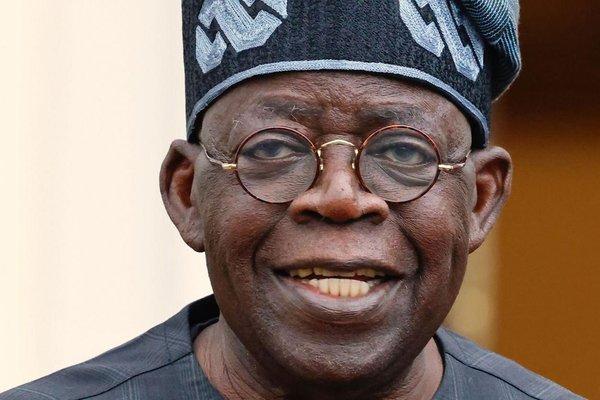Uganda
Uganda, the "Pearl of Africa", is a landlocked nation in East Africa known for its diverse landscapes, rich wildlife, and vibrant culture. Bordered by Kenya, Tanzania, Rwanda, the Democratic Republic of Congo, and South Sudan, Uganda boasts a varied geography encompassing the expansive Lake Victoria, the Nile River basin, and numerous mountains and plateaus. The country has a tropical climate, fertile soils, and significant mineral deposits, contributing to its agricultural economy and growing industrial sector. While Uganda has experienced both periods of growth and challenges, including political instability and economic fluctuations, it has also shown resilience and continues to strive for development and stability.

EastAfrica

241,038 sq km

UTC+03:00

48 Million

English, Swahili

Christianity, Islam

Shillings (UGX)

Yoweri Kaguta Museveni Tibuhaburwa

Pearl of Africa
Uganda, landlocked country in east-central Africa. About the size of Great Britain, Uganda is populated by dozens of ethnic groups. The English language and Christianity help unite these diverse peoples, who come together in the cosmopolitan capital of Kampala, a verdant city whose plan includes dozens of small parks and public gardens and a scenic promenade along the shore of Lake Victoria, Africa’s largest freshwater lake. The Swahili language unites the country with its East African neighbours Kenya and Tanzania.
Photos and Videos
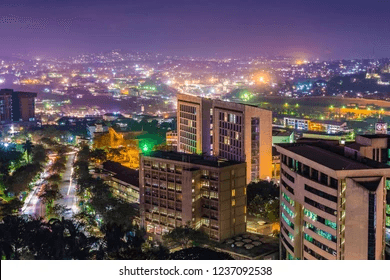



Cultural Life
Cultural milieu
In the heart of East Africa lies Uganda, a country where culture is not a relic of the past but a living, breathing part of everyday life. From the rhythmic drumbeats echoing through the hills of Buganda to the age-old warrior dances of the Karamoja plains, Uganda's cultural life is a vibrant mosaic woven from more than 50 diverse ethnic threads.
The Baganda, Banyankole, Basoga, Acholi, and many others each carry distinct customs, languages, and worldviews yet together they form a uniquely Ugandan identity. Here, oral tradition is an art, passed from elders to youth through proverbs, poetry, and folklore told under starlit skies.
Music is the soul of Uganda. Crafted from wooden xylophones, cowhide drums, and stringed adungus, it fills the air during weddings, initiation rites, and community festivals. Dance follows naturally expressive, intricate, and rooted in ancient rhythms. Crafts, too, tell stories: baskets, bark cloth, and beadwork reflect centuries of creativity and spiritual symbolism.
Religion in Uganda is a fusion of the old and new. Christianity and Islam coexist with traditional beliefs that honor ancestors and nature’s forces. Spirituality is not just practiced it is lived, deeply embedded in both rural rituals and urban life.
Modern Uganda doesn’t forget its roots. In Kampala’s art galleries, literature circles, and music studios, a new generation reimagines tradition. Writers like Jennifer Nansubuga Makumbi, fashion designers, filmmakers, and musicians are blending heritage with global influence, proudly telling Uganda’s story on the world stage.
To experience Uganda is to step into a culture that dances, sings, prays, and creates with pride, purpose, and an unshakable sense of identity.
Daily life and social customs
In Uganda, life unfolds with rhythm, warmth, and an unspoken sense of community. From the moment the sun rises over the green hills and banana groves, daily life is guided not just by time, but by tradition, respect, and relationships.
Most Ugandans live in extended families, where elders are deeply respected and often serve as advisors in both domestic and communal matters. Greetings are essential and meaningful whether in a bustling city or a quiet village, a handshake, a bow of the head, or the warm phrase “Oli otya?” (How are you?) marks every encounter. It’s not just politeness it’s a ritual of connection.
In rural areas, the day begins early. Farming remains the backbone of life for many, with families working together to tend crops like matooke (green bananas), millet, or cassava. Women often balance household responsibilities cooking, fetching water, caring for children with their roles in the field. Men may lead livestock or take on trading roles, while youth assist and attend school where possible.
Meals are communal, simple yet hearty. Matooke, posho, and beans are staples, often enjoyed while seated on mats with bare hands, symbolizing unity and humility. Sharing food is more than nourishment it’s an act of generosity and love.
Social customs are guided by values of respect, hospitality, and modesty. Visitors are treated as honored guests, offered food and a seat, even in the humblest homes. Marriage ceremonies, funerals, and clan meetings are vital social events, often lasting several days and bringing entire communities together.
Despite growing urbanization, traditional customs remain central. In cities like Kampala, you’ll find a blend of modern lifestyle smartphones, business meetings, university students with enduring cultural values. People still stop to greet each other. Neighbour’s still share. And family still comes first.
In Uganda, daily life is not rushed it is lived. Deeply. And always together.


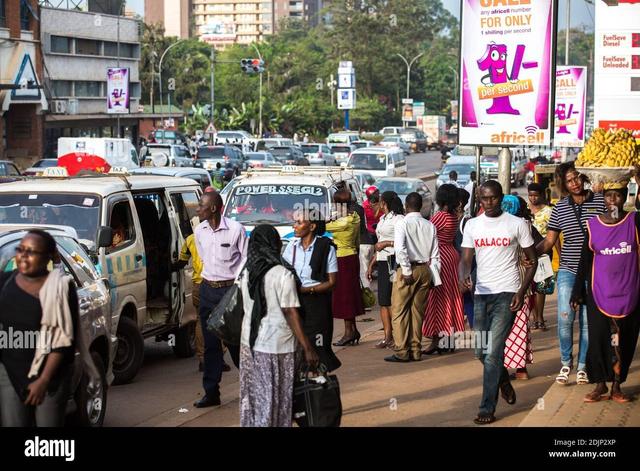


Cuisine




A Celebration of Flavor, Simplicity, and Heritage
Ugandan cuisine is not just about food it's about culture, community, and tradition served on every plate. Rooted in the rhythms of the land and shaped by generations of farmers, families, and festive gatherings, Uganda’s food tells a story of warmth and abundance.
At the heart of most meals is matooke, the beloved green banana, peeled, steamed in banana leaves, and mashed into a soft, comforting staple. It's often accompanied by groundnut sauce rich, creamy, and earthy, made from crushed roasted peanuts a culinary signature across many regions.
Another daily staple is posho, a firm maize meal porridge, served with stews of beans, beef, or fish. In the west, millet bread (called kalo) is the preferred base, paired with flavorful soups. In the east, sweet potatoes, cassava, and simsim (sesame) paste often grace the table.
Meat, while more commonly served on special occasions, is deeply cherished. Goat, chicken, beef, and sometimes pork are roasted or stewed with onions, tomatoes, and local spices. The popular street food, rolex a rolled chapati filled with fried eggs and vegetables is a beloved urban snack, quick, tasty, and iconic.
Freshness defines Ugandan cuisine. Markets overflow with organic produce mangoes, pineapples, jackfruit, avocados, and passion fruit picked ripe from trees and farms. Meals are typically cooked fresh, often over charcoal or open fire, infusing every dish with a rustic, smoky flavor.
Food in Uganda is a communal affair, served with generosity and eaten slowly. Whether it's a rural family meal under a thatched roof or a city gathering with friends, sharing food is an expression of love, respect, and hospitality.
In every bite, Ugandan cuisine invites you not just to taste, but to connect with the land, the people, and the timeless spirit of home.




Music
Music in Uganda is more than entertainment it is identity, memory, and the living voice of tradition. From the drumbeats echoing in rural villages to the electric rhythms of Kampala’s nightclubs, Ugandan music pulses through daily life, uniting generations and communities across diverse cultures.
Each of Uganda’s over 50 ethnic groups brings its own musical language. In Buganda, the entenga drum ensemble and amadinda xylophone create polyrhythmic harmonies passed down through royal courts. Among the Acholi, Bwola dance music performed with large drums and chanted vocals celebrates unity, while in Karamoja, warriors once danced to the deep chants and throbbing beats of ceremonial songs.
Traditional instruments are crafted by hand and tuned by ear: the adungu (arched harp), the endongo (lyre), the tube fiddle, and the engoma (drums) form the backbone of indigenous soundscapes. Music is deeply tied to life’s rituals birth, marriage, harvest, initiation, and remembrance and often accompanied by storytelling, dance, and prayer.
In today’s cities, Ugandan music thrives in new forms. Afrobeat, dancehall, gospel, hip-hop, and kidandali (a homegrown pop genre) dominate the airwaves. Artists like Eddy Kenzo, Sheebah Karungi, Azawi, and Bobi Wine have risen to regional and international fame, blending local languages and rhythms with global sounds.
Yet, even as it evolves, Ugandan music remains rooted in cultural authenticity. Folk revival groups, schools, and cultural centers like Ndere Troupe are preserving traditional forms, ensuring they live alongside the modern.
Whether performed at a wedding, blasted from boda boda speakers, or sung softly around a fire, music in Uganda is ever-present a dynamic force that tells the story of its people with pride, rhythm, and soul.

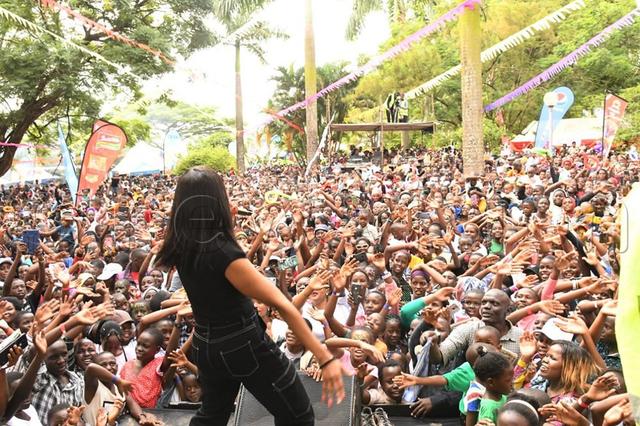


Kadongo Kamu (meaning "one guitar" in Luganda) is Uganda's oldest popular music genre. It emerged in the 1950s and features storytelling, social commentary, and heavy use of the bass guitar.
This genre blends traditional Ugandan rhythms with Afrobeats, dancehall, and pop music. It’s among the most popular styles today, especially among the youth.
Key Themes: Love, celebration, lifestyle.
Gospel music is hugely influential in Uganda, spanning both contemporary and traditional styles. It often features choirs, bands, and solo artists delivering Christian faith-based messages.
The arts
Uganda’s art is a vibrant reflection of its people bold, expressive, rooted in heritage, and constantly evolving. Across the country, the arts serve as a mirror of cultural identity and a canvas for storytelling, resistance, and renewal.
Visual arts in Uganda span centuries, from ancient rock paintings in eastern caves to contemporary works in Kampala’s thriving gallery scene. Artists like Xenson, Maria Naita, and Ronex Ahimbisibwe use sculpture, paint, mixed media, and installation to explore themes of identity, politics, and tradition. In villages and markets, artisans craft bark cloth, beaded jewelry, woven baskets, and ceramic pottery, each piece carrying generations of skill and symbolism.
Performing arts have deep cultural roots. Traditional dance and theatre are essential to communal life vivid, rhythmic, and ceremonial. Every region has its own styles: the energetic Bakisimba dance of the Baganda, the stomping rituals of the Acholi, or the flute-accompanied performances of the Basoga. Cultural troupes like Ndere keep these forms alive, performing across the world.
Modern theatre, poetry slams, and spoken word events have taken hold in urban spaces. Kampala’s stages and festivals give rise to bold new voices who tackle everything from love and migration to social justice and identity.
Ugandan literature is another growing force. From the poetic fire of Okot p’Bitek to the internationally acclaimed novels of Jennifer Nansubuga Makumbi, Ugandan writers are reclaiming narrative space with sharp insight and lyrical beauty.
In every form visual, written, or performed the arts in Uganda are alive with purpose. They speak of the past, engage the present, and imagine a future shaped by creative freedom and cultural pride.


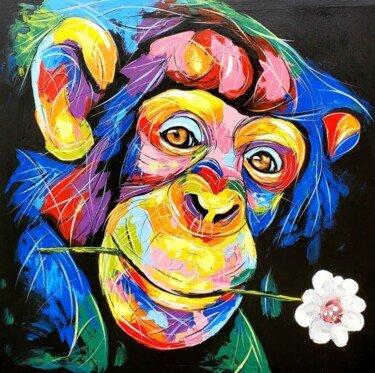


People
Ethnic groups
Uganda is a nation defined by its people diverse, resilient, and united by a deep sense of community. With over 50 distinct ethnic groups, Uganda is one of Africa’s most culturally rich and socially dynamic countries. Each group brings its own language, customs, and worldview, yet all are bound by shared values of hospitality, respect, and togetherness.
In the central region, the Baganda the largest ethnic group are known for their intricate clan system, regal traditions, and deeply rooted sense of identity. In the north, the Acholi and Langi are celebrated for their oral poetry, dance, and storytelling heritage. The western highlands are home to the Banyankole, Bakiga, and Batoro, whose social structures and cattle-keeping customs are central to life. In the east, the Basoga and Bagisu uphold vibrant traditions like Imbalu (circumcision rituals), marking key transitions into adulthood. The remote northeast is home to the Karamojong, pastoralists whose resilience and pride in heritage remain unwavering despite modern challenges.
Ugandans are warm, welcoming, and community-oriented. Whether in Kampala’s bustling markets or a quiet village path, you’re greeted with genuine smiles and curious conversation. Family and kinship play a vital role in social life, and respect for elders is deeply ingrained across all cultures.
Despite their diversity, the people of Uganda share a powerful common thread: resilience. Having endured colonial rule, political upheavals, and economic trials, Ugandans continue to rise with dignity, creativity, and a spirit of hope. Today’s youth are shaping a new Uganda educated, expressive, tech-savvy, and globally engaged, yet still proudly connected to their roots.
To meet the people of Uganda is to encounter a mosaic of cultures, a chorus of languages, and a living legacy of strength, unity, and grace.





Religion
Religion is a vital part of life in Uganda, shaping values, communities, and everyday experiences. The country is predominantly Christian, with Catholics and Anglicans forming the largest groups, alongside a rapidly growing Pentecostal movement known for its vibrant worship and youth appeal.
Islam is the second-largest faith, with strong historical roots and active communities, especially in central and eastern regions. Mosques and Islamic schools are central to spiritual and social life.
Traditional African beliefs continue to thrive, especially in rural areas, often blending with mainstream religions. These practices honor ancestors, nature, and community rituals.
Despite its diversity, Uganda is known for religious tolerance. People of different faiths live and worship side by side, united by mutual respect and a deep sense of spirituality.
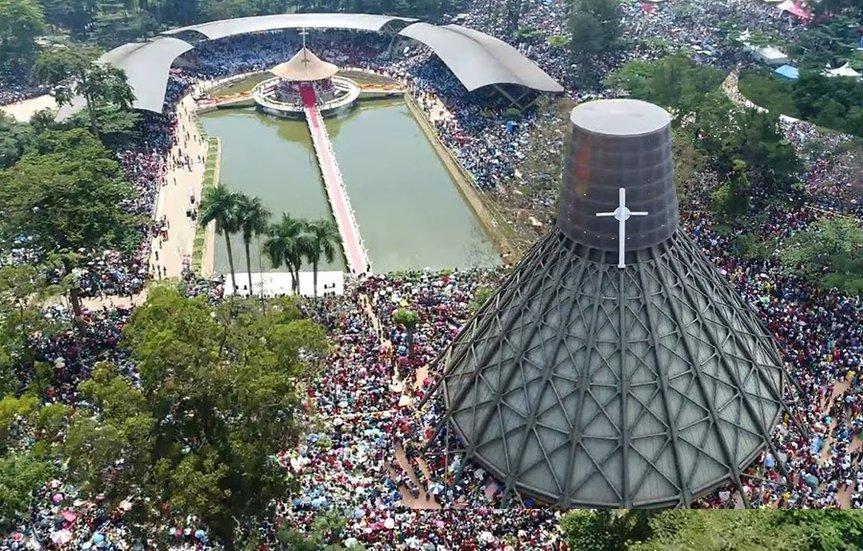


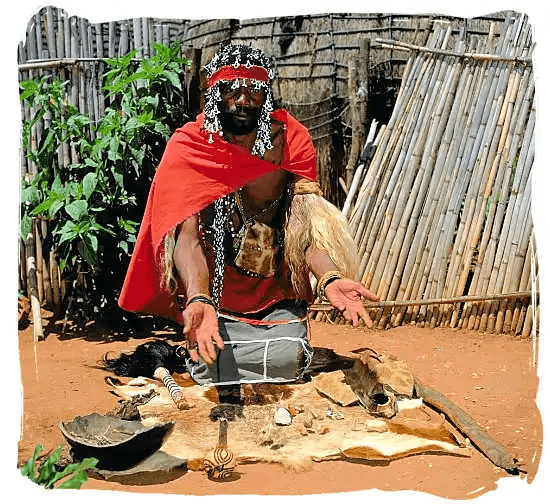

Settlement patterns
Uganda’s settlement patterns reflect its agricultural heritage, ethnic diversity, and evolving economy. The majority of Ugandans over 70% live in rural areas, where settlements are typically dispersed, centered around farmland, and organized along family or clan lines. These rural communities are closely tied to the land, with homes often built from locally sourced materials like mud, thatch, or brick.
Urbanization, however, is steadily rising. Major towns like Kampala, Entebbe, Mbarara, Gulu, and Mbale have grown rapidly, attracting people seeking jobs, education, and better services. Kampala, the capital, is the country’s urban heart diverse, densely populated, and expanding outward into surrounding suburbs.
Patterns also reflect cultural traditions: in some regions, homes cluster around communal compounds; in others, homesteads are widely spread. Infrastructure and access to water, schools, and roads often shape how and where people settle.
Uganda today is a country where rural tradition and urban transition coexist each shaping the identity and rhythm of its people and places.
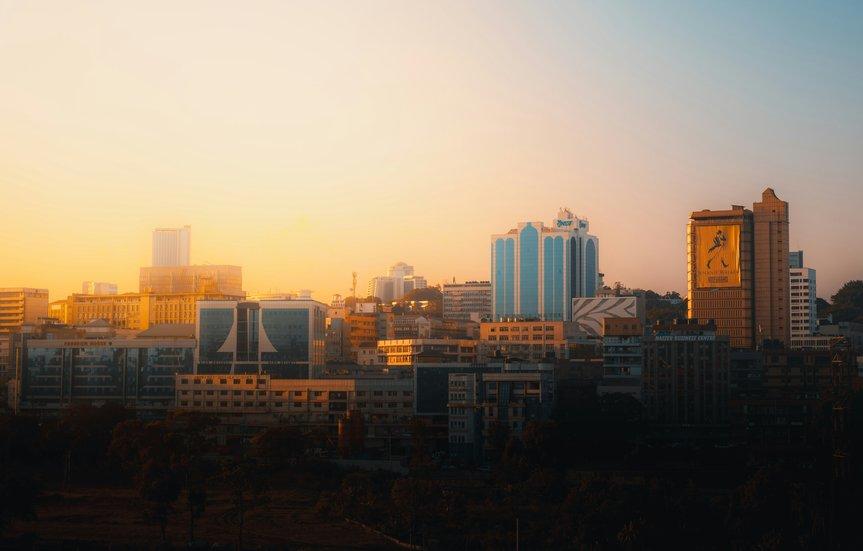
Uganda is undergoing a rapid urban transformation, as cities expand and rural populations migrate in search of opportunity. At the center of this shift is Kampala, a dynamic capital where tradition meets technology, and informal markets thrive alongside high-rise buildings.
Driven by youth, education, and economic change, Uganda’s towns and cities like Gulu, Mbarara, Mbale, and Arua are growing fast. This transition brings improved access to jobs, healthcare, and digital connectivity, while also presenting challenges in housing, infrastructure, and planning.
Despite the shift, cultural identity remains strong. Urban Ugandans often carry rural values with them family ties, community support, and respect for tradition even in modern settings.
The urban transition is redefining how Ugandans live, work, and interact, creating a new blend of heritage and progress in the heart of Africa.

Rural life in Uganda is deeply rooted in tradition, community, and a close relationship with nature. In villages across the country, time-honored customs guide daily life from farming and food preparation to social gatherings and ceremonies.
Most rural Ugandans depend on subsistence agriculture, growing crops like matoke, millet, cassava, and beans. Families often live in clan-based homesteads, where elders are respected as custodians of culture and wisdom.
Traditional practices shape every aspect of life: storytelling around evening fires, communal work known as bulungi bwansi, and ceremonies that mark birth, marriage, and death. Local crafts, music, and dance are not just for celebration—they are vessels of history and identity.
While modernity is gradually reaching rural areas, Uganda’s villages remain strongholds of cultural continuity places where ancestral values, hospitality, and a deep connection to the land continue to thrive.
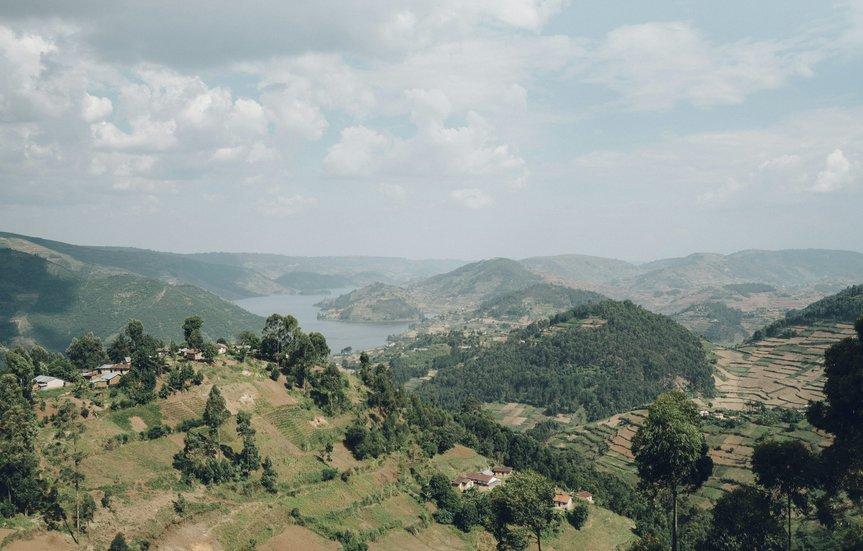
Urban settlement
Urban settlement in Uganda is growing rapidly, driven by population growth, economic development, and rural-to-urban migration. Cities like Kampala, Entebbe, Gulu, and Mbarara have become key centers of commerce, governance, education, and innovation.
Kampala, the capital, is the largest urban settlement vibrant, diverse, and expanding. It features a mix of formal housing, informal settlements, high-rise offices, and bustling markets. Urban areas are characterized by greater access to services such as electricity, transportation, and healthcare, though infrastructure often struggles to keep pace with the fast-growing population.
Many urban settlements develop along transport routes, near trade hubs, or around industrial and administrative centers. The growth of peri-urban areas transitional zones between city and countryside is reshaping the landscape and creating new challenges in planning, housing, and sustainability.
Uganda’s urban settlements reflect a country in motion balancing tradition with modernity, and rural heritage with the demands of a dynamic, urbanizing future.
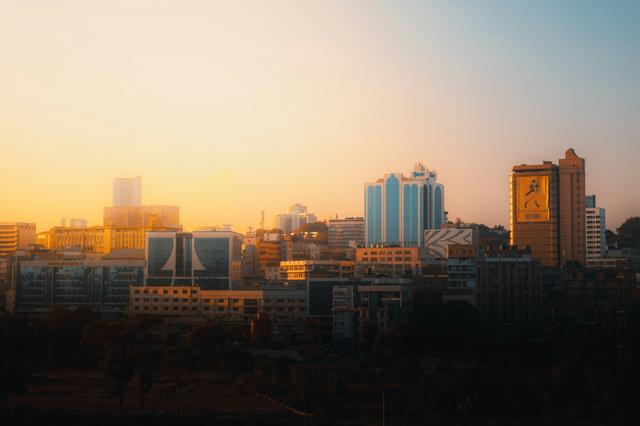
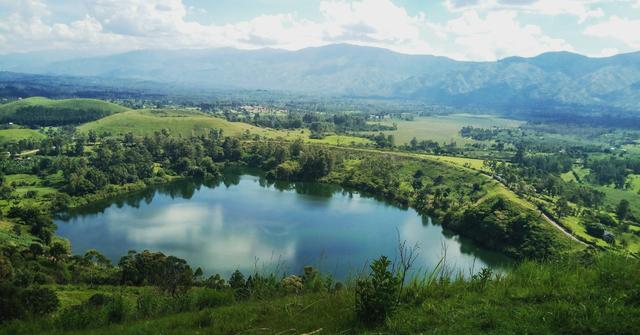

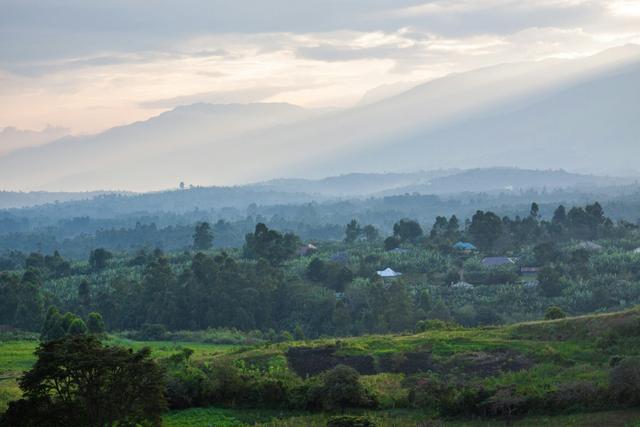
Demographic trends
Uganda is a vibrant, fast-growing country with a population of over 51 million and one of the youngest populations in the world more than 75% are under 30. This youthful energy is a powerful driver of innovation, creativity, and growth.
With a steadily improving life expectancy (now around 68 years) and declining fertility rates, Uganda is well-positioned to harness its demographic dividend. Urban centers are expanding, and rural communities remain strong and resourceful, contributing to a dynamic national economy.
Uganda’s future is brightbuilt on the strength, ambition, and resilience of its people.
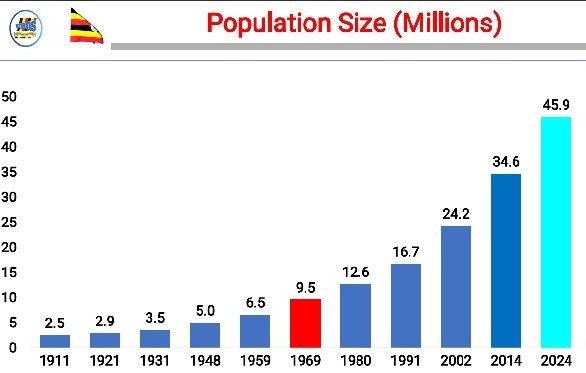
Touristic Cities
Jinja: Uganda’s Adventure Capital
Located on the northern shores of Lake Victoria, Jinja is famously known as the source of the River Nile and the adventure capital of East Africa. Just 80 km from Kampala, this lively town offers a perfect blend of natural beauty, thrill-seeking activities, and cultural charm.
Visitors can experience white-water rafting, bungee jumping, kayaking, and quad biking, or enjoy sunset cruises and nature walks along the Nile. Jinja’s vibrant town center features colonial architecture, bustling markets, and a laid-back vibe. It's also home to the internationally renowned Nyege Nyege Festival, a celebration of music, art, and African culture.
Whether you're chasing adrenaline or seeking scenic relaxation, Jinja offers an unforgettable experience at the heart of Uganda’s natural wonders.
Entebbe: Uganda’s Lakeside Gateway
Entebbe, nestled along the shores of Lake Victoria, is Uganda’s charming lakeside town and the country’s main international gateway. Home to Entebbe International Airport, it welcomes most visitors to Uganda with a peaceful, scenic first impression.
Known for its relaxed atmosphere, Entebbe offers a mix of nature, history, and leisure. Popular attractions include the lush Entebbe Botanical Gardens, the Uganda Wildlife Conservation Education Centre (formerly the zoo), and Lake Victoria beaches perfect for sunsets and boat rides.
Nature lovers can enjoy bird watching, fishing, and day trips to the Ngamba Island Chimpanzee Sanctuary. The town also holds colonial-era landmarks and quiet cafes, making it an ideal spot to unwind before or after a safari.
With its cool breezes, friendly locals, and lakeside charm, Entebbe is more than a stopover it’s a destination in its own right.
Mbarara
Mbarara is a vibrant city in southwestern Uganda, approximately 270 km southwest of Kampala. As the second-largest city in Uganda, it serves as a commercial and cultural hub for the Ankole region. Mbarara is renowned for its rich cultural heritage, diverse wildlife, and scenic landscapes.
Key Attractions:
- Lake Mburo National Park: Located about 30 km east of Mbarara, this park is home to over 68 mammal species, including zebras, giraffes, and buffaloes, as well as over 350 bird species. Visitors can enjoy game drives, boat safaris, and walking tours.
- Igongo Cultural Centre: Situated approximately 12 km from Mbarara, Igongo offers insights into the culture of the Ankole people through exhibits, traditional homesteads, and artifacts.
- Biharwe Eclipse Monument: Located in Biharwe, this monument commemorates the solar eclipse of 1520, a significant event in the history of the Ankole Kingdom.
- Lake Nakivale: Situated about 40 km southeast of Mbarara, Lake Nakivale is a tranquil spot known for its sandy beaches and the nearby Nakivale Refugee Settlement, offering a unique cultural experience.
- River Rwizi: Flowing through Mbarara, River Rwizi is ideal for canoeing and birdwatching, with opportunities to spot species like the African Fish Eagle.
Climate:
Mbarara experiences a tropical rainforest climate with a mix of sunshine and rainfall throughout the year. Visitors should be prepared for varying weather conditions, including occasional thunderstorms and humid temperatures.
Kampala
Kampala, Uganda’s bustling capital, blends rich history with vibrant culture. Key attractions include the Uganda National Museum, showcasing the nation's heritage; the Kasubi Tombs, a UNESCO World Heritage Site and royal burial ground; and the Uganda National Mosque, one of East Africa's largest. Visitors can explore lively markets like Owino and Nakasero, savor local delicacies such as the iconic "rolex," and enjoy the city's dynamic nightlife. With a mix of historical sites, cultural experiences, and modern amenities, Kampala offers a comprehensive Ugandan experience.
Mbale
Mbale, located in Eastern Uganda, is a vibrant city renowned for its rich cultural heritage and stunning natural attractions. As of mid-2025, it stands out as a cultural and natural gem, offering visitors a blend of rich traditions and breathtaking landscapes.
Key Attractions:
- Sipi Falls: A series of three stunning waterfalls, with the tallest cascading 95 meters. Located on the north-western slopes of Mount Elgon, they offer opportunities for hiking, abseiling, and birdwatching.
- Mount Elgon National Park: Home to the world's largest volcanic caldera, the park features diverse ecosystems, including bamboo forests and caves, making it ideal for trekking and nature walks.
- Imbalu Ceremony: A traditional circumcision rite practiced by the Bagisu people, held every even-numbered year in August at the Mutoto Cultural Site near Mbale. This cultural event attracts thousands of visitors and is a significant part of the region's identity.
- Nyero Rock Paintings: Ancient rock art located about 65 kilometers north of Mbale, featuring intricate designs and offering insights into the region's history.
Urban Development:
Under the Uganda Support to Municipal Infrastructure Development (USMID) program, significant infrastructural improvements have been made in Mbale, including the construction and upgrade of key roads such as Naboa Road, Cathedral Avenue, and Pallisa Road. These developments have enhanced mobility and accessibility within the city.
Climate:
Mbale experiences a tropical rainforest climate with a mix of sunshine and rainfall throughout the year. Visitors should be prepared for varying weather conditions, including occasional thunderstorms and humid temperatures.


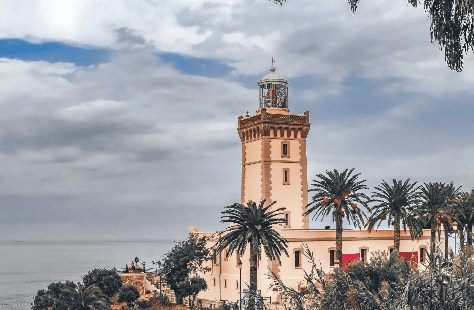
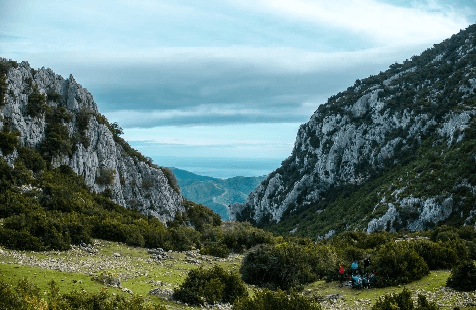
Accomodation
Guest houses
Guest houses in Uganda offer a warm, affordable, and authentic travel experience. Typically family‑run or owner‑operated, they're often situated in residential neighborhoods or near key attractions, giving guests a taste of local life. With modest pricing, they usually include en‑suite rooms and breakfast, and pride themselves on personalized service and cultural immersion despite some variability in service quality due to evolving standards . Across the country in Kampala, Entebbe, Jinja, and safari hubs guests can choose from rustic home stays with home-cooked meals to eco-conscious boutique retreats, each offering a friendly, community-driven atmosphere that sets them apart from larger hotels.


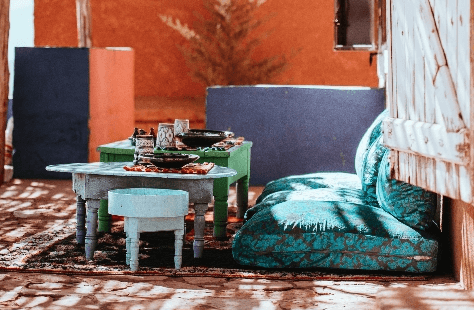

Hotels and resorts
Uganda’s hotels and resorts offer a rich range of lodging experiences from elegant city stays to serene lakeside retreats and immersive safari camps. In Kampala, upscale properties like Serena Hotel and Protea by Marriott Skyz feature plush accommodations, spa services, rooftop pools, and conference facilities, catering well to both business and leisure travelers .Along Lake Victoria, resorts such as Munyonyo Commonwealth Resort, Speke Resort Munyonyo, and Lake Victoria Serena Golf Resort & Spa provide waterfront luxury with multiple dining venues, wellness centers, golf, and water‑sport amenities. Safari enthusiasts can choose from mid‑range lodges like Pakuba Safari Lodge in Murchison Falls with Nile views, game drives, and boat cruises to upscale festively rebuilt wilderness lodges like Gorilla Forest Camp, Silverback Lodge, and Kyambura Gorge Lodge, offering immersive wildlife encounters, conservation-focused stays, and eco-conscious design. Overall, Uganda’s hospitality infrastructure continues to grow, with increasing international demand and rising investment fueling the development of resorts, safari camps, and upgraded urban hotels making it a destination of choice for those seeking comfort, adventure, and authentic local experiences.

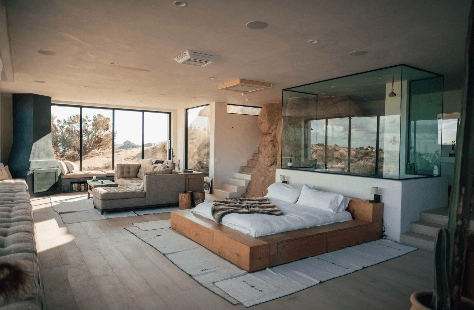
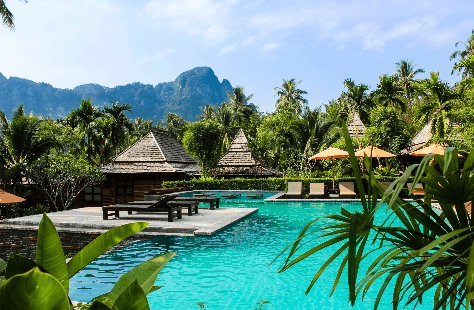

Riads
In Uganda, charming courtyard-style lodges delivering a similar appeal think peaceful retreats, intimate design, and warm, personalized hospitality. Notably:
Yellow Haven Lodge on the shores of Lake Victoria just outside Kampala is the best example of this style. It features modern, two-storey townhouses and single-storey units arranged around lush gardens and water inlets . With its infinity pool, private beach access, spa, sauna, and outdoor fireplace, it offers a true oasis setting. Guests consistently praise the “tranquil atmosphere,” “friendly hosts,” and “beautiful lake views” .



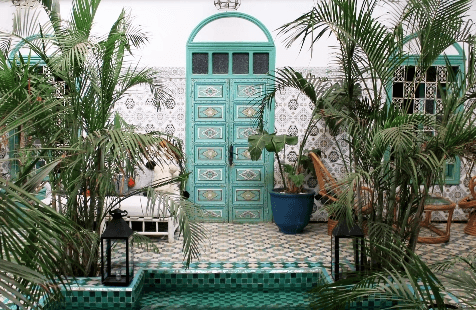
Campings
Uganda, often referred to as the "Pearl of Africa," offers a diverse array of camping experiences that cater to nature enthusiasts, adventure seekers, and those looking to immerse themselves in the country's rich biodiversity and landscapes.

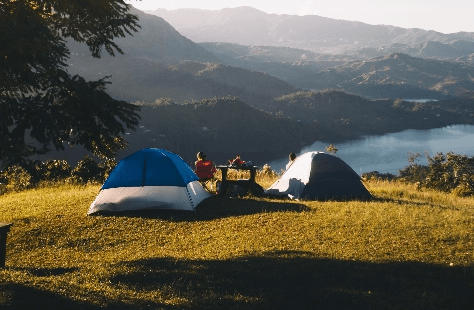
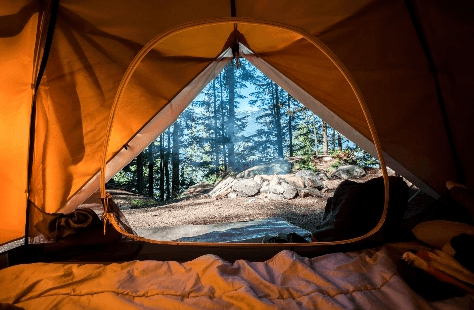

Requirements for Visa
Documents to be submitted for your application
1. Valid Passport
2. Recent Passport-sized Photograph
3. Yellow Fever Vaccination Certificate
4. Travel Itinerary
5. Hotel Reservations
6. Financial Proof
7. Police Clearance (if applicable)
At the time of visa issuance, please provide the following documents
- A return ticket with confirmed reservation;
- Travel Insurance;
- A hotel booking, or Introduction of a “Voucher”;
- Chancery fees.
Useful links
- Types of granted visas
- Ordinary visas
- Countries whose citizens are exempted from entry visa into Uganda
- Countries with agreements signed by Uganda for the abolition of visas for official
passports
- Consular services
Economy of Uganda
Agriculture, forestry, and fishing
Uganda’s economy remains firmly rooted in its natural resource base. The Agriculture, Forestry & Fishing (AFF) sectors employ over 60% of the population and collectively contribute around 24–25% of GDP (FY 2023/24)
Agriculture
Smallholder farmers dominate Uganda’s agricultural landscape:
61% of households engage in crop production; 37% in livestock farming
Main crops include maize (49%), beans (44%), sweet potatoes (30%), and bananas (27%)
Uganda leads Africa in coffee exports—in February 2025 alone, 555,756 bags were shipped (+28% YoY), earning
Forestry 🌲
Forest coverage spans about 24% of land area, with 506 central forest reserves managing some 6.3% of the country.
Forestry contributes roughly 6% of GDP, supplying timber, biomass, and non-timber forest products. Conservation efforts and replanting projects are underway to combat deforestation .
Fishing 🎣
Inland fisheries contribute around 3% of GDP and 12% of agricultural GDP, supporting approximately 3.2 million people and sustaining 15 million Ugandans nutritionally
Fish catches have increased significantly—from around 307,000 tonnes in 2018/19 to over 600,000 tonnes in 2020—with exports rising to 37,000 tonnes worth US $227 million .
📈 Economic Performance & Outlook
In FY 2023/24, Uganda’s economy grew by 6.1%, with AFF sectors expanding by 5.1% in agriculture and forestry.
Forecasts indicate 6–6.5% economic growth in FY 2024/25, driven by continued agricultural productivity and the coming oil sector developments .
Once oil begins flowing, GDP growth could accelerate further, possibly reaching double digits according to IMF projections .

Resources and power
Uganda possesses abundant natural resources, particularly in energy, with significant potential for hydropower, biomass, solar, geothermal, and peat. The country also has notable mineral deposits like copper, cobalt, and gold, and recent discoveries of oil and gas in the Albertine region. While energy access is still limited, particularly in rural areas, Uganda is working to expand its electricity grid and develop its renewable energy resources.
Manufacturing
Uganda's manufacturing sector is primarily focused on processing agricultural products and producing consumer goods. Key industries include food processing, textiles, and the production of construction materials. While the sector contributes significantly to the country's GDP and employment, it faces challenges like reliance on imported raw materials and competition from cheaper imports.
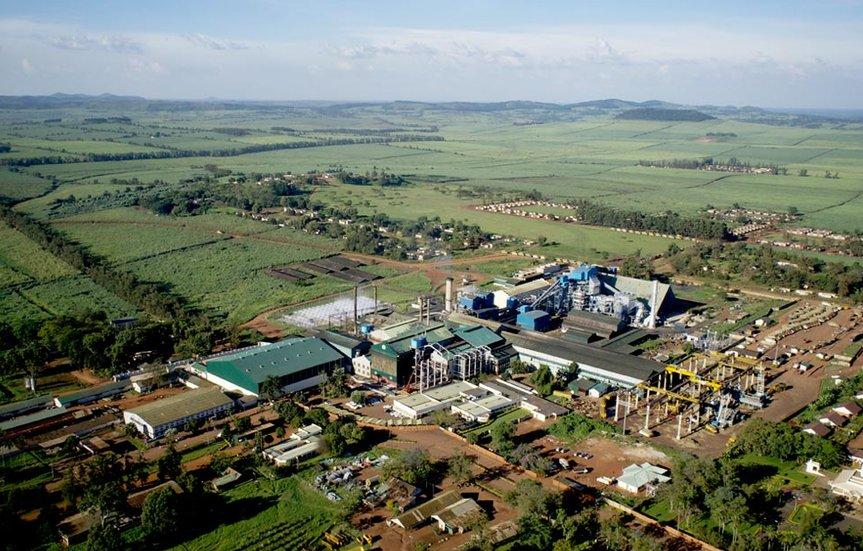
Finance
Uganda’s finance sector is growing and plays a key role in economic development. The Bank of Uganda regulates the system, which includes commercial banks, microfinance institutions, SACCOs, insurance companies, and capital markets. Access to banking is improving, but many rural populations still rely on SACCOs and mobile money services like MTN Mobile Money and Airtel Money.
Mobile money has greatly boosted financial inclusion, allowing millions to save, send, and borrow money. Government initiatives like the Parish Development Model and the National Financial Inclusion Strategy aim to improve access to affordable financial services.
However, challenges remain, including high interest rates, low credit access for small businesses, and low financial literacy. Despite these issues, digital finance and fintech are expanding rapidly, offering new opportunities for growth and inclusion.

Trade
Uganda remains a commodity-export dependent country, with gold and coffee at the core of its export earnings. While imports lean heavily on industrial and fuel inputs, the country is aggressively pushing for local production, industrialization, and regional integration to balance trade and sustain economic growth. Despite progress, non‑tariff barriers and informal trade in the region pose challenges that require ongoing policy attention.es.

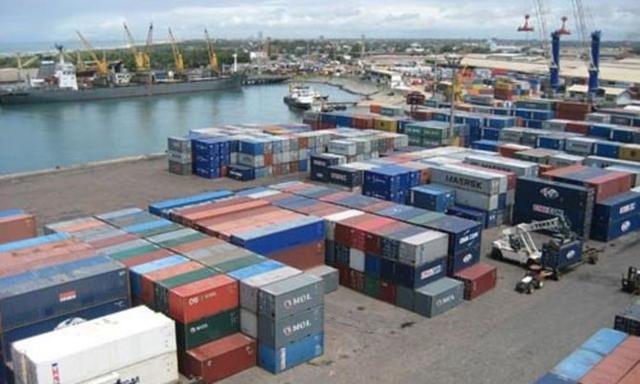



Labour and taxation
Labour and taxation in Uganda are central to the country’s economic structure. The labour force is largely informal, with agriculture employing the majority, while formal employment is concentrated in the public sector, services, and a growing private sector. Youth unemployment remains a challenge due to a young population and limited job creation. Labour laws regulate employment terms, minimum wage (though not actively enforced), and worker rights, but enforcement is weak in the informal sector.
Taxation is overseen by the Uganda Revenue Authority (URA) and is guided by the Income Tax Act, VAT Act, and related legislation. The tax system includes corporate income tax (30%), PAYE on employee income (ranging from 10% to 40%), Value Added Tax (18%), and import duties. Informal businesses often escape taxation, limiting the tax base, though URA has increasingly digitalized tax systems to improve compliance. Tax incentives are offered to attract investment, particularly in agriculture, manufacturing, and oil. Despite these efforts, tax-to-GDP ratio remains low, around 13%, constraining public service funding. Uganda continues to pursue reforms aimed at widening the tax net and improving labour productivity.

Transportation and telecommunications
Transportation and telecommunications in Uganda are vital pillars of the country’s infrastructure, shaping economic growth and connectivity. The transportation system relies heavily on road networks, which cover approximately 140,000 km, but many rural roads remain unpaved, limiting accessibility. The country also has a modest railway network primarily used for freight, with ongoing modernization efforts to enhance efficiency and link Uganda to regional markets. Inland waterways on Lake Victoria support cargo transport, while air transport connects major cities via Entebbe International Airport, the main gateway. Telecommunications have expanded rapidly, driven by mobile phone penetration exceeding 70%, widespread use of mobile money, and increasing internet access, mainly through 3G and 4G networks. The government and private sector investments continue to focus on expanding broadband coverage and improving digital infrastructure to support e-commerce and digital services, though rural areas still face connectivity challenges. Together, transportation and telecommunications underpin Uganda’s efforts toward regional integration and economic development.




